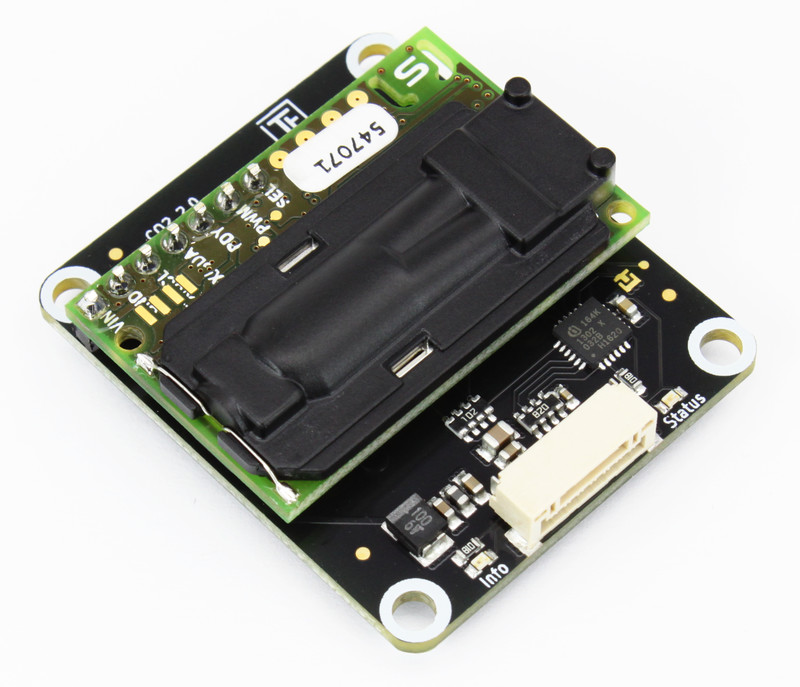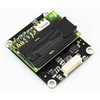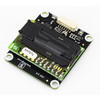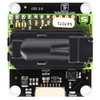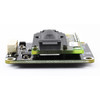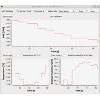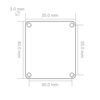- Getting Started
- Hardware
- Bricks
- Bricklets
- Accelerometer Bricklet 2.0
- Air Quality Bricklet
- Ambient Light Bricklet 3.0
- Analog In Bricklet 3.0
- Analog Out Bricklet 2.0
- Analog Out Bricklet 3.0
- Barometer Bricklet
- Barometer Bricklet 2.0
- Breakout Bricklet
- CAN Bricklet
- CAN Bricklet 2.0
- CO2 Bricklet 2.0
- Color Bricklet
- Color Bricklet 2.0
- Compass Bricklet
- DC Bricklet 2.0
- Distance IR Bricklet
- Distance IR Bricklet 2.0
- Distance US Bricklet 2.0
- DMX Bricklet
- Dual Button Bricklet 2.0
- Dust Detector Bricklet
- E-Paper 296x128 Bricklet
- Energy Monitor Bricklet
- GPS Bricklet 2.0
- GPS Bricklet 3.0
- Hall Effect Bricklet
- Hall Effect Bricklet 2.0
- Humidity Bricklet 2.0
- IMU Bricklet 3.0
- Industrial Analog Out Bricklet 2.0
- Industrial Counter Bricklet
- Industrial Digital In 4 Bricklet 2.0
- Industrial Digital Out 4 Bricklet
- Industrial Digital Out 4 Bricklet 2.0
- Industrial Dual 0-20mA Bricklet
- Industrial Dual 0-20mA Bricklet 2.0
- Industrial Dual AC Relay Bricklet
- Industrial Dual Analog In Bricklet 2.0
- Industrial Dual Relay Bricklet
- Industrial PTC Bricklet
- Industrial Quad Relay Bricklet 2.0
- IO-16 Bricklet
- IO-16 Bricklet 2.0
- IO-4 Bricklet 2.0
- Isolator Bricklet
- Joystick Bricklet
- Joystick Bricklet 2.0
- Laser Range Finder Bricklet 2.0
- LCD 128x64 Bricklet
- LCD 20x4 Bricklet
- LED Strip Bricklet 2.0
- Line Bricklet
- Linear Poti Bricklet
- Linear Poti Bricklet 2.0
- Load Cell Bricklet 2.0
- Motion Detector Bricklet 2.0
- Motorized Linear Poti Bricklet
- Multi Touch Bricklet
- Multi Touch Bricklet 2.0
- NFC Bricklet
- OLED 128x64 Bricklet 2.0
- OLED 64x48 Bricklet
- One Wire Bricklet
- Outdoor Weather Bricklet
- Particulate Matter Bricklet
- Performance DC Bricklet
- Piezo Speaker Bricklet
- Piezo Speaker Bricklet 2.0
- Real-Time Clock Bricklet
- Real-Time Clock Bricklet 2.0
- Remote Switch Bricklet 2.0
- RGB LED Bricklet 2.0
- RGB LED Button Bricklet
- Rotary Encoder Bricklet 2.0
- Rotary Poti Bricklet
- Rotary Poti Bricklet 2.0
- RS232 Bricklet
- RS232 Bricklet 2.0
- RS485 Bricklet
- Segment Display 4x7 Bricklet
- Segment Display 4x7 Bricklet 2.0
- Servo Bricklet 2.0
- Silent Stepper Bricklet 2.0
- Solid State Relay Bricklet 2.0
- Sound Intensity Bricklet
- Sound Pressure Level Bricklet
- Temperature Bricklet
- Temperature Bricklet 2.0
- Temperature IR Bricklet 2.0
- Thermal Imaging Bricklet
- Thermocouple Bricklet 2.0
- Tilt Bricklet
- UV Light Bricklet 2.0
- Voltage/Current Bricklet 2.0
- XMC1400 Breakout Bricklet
- Master Extensions
- Power Supplies
- Discontinued Products
- Timeline
- Software
- Kits
- Embedded Boards
- Specifications
CO2 Bricklet 2.0¶
Features¶
- Measures CO2 concentration from 400 to 10000ppm (parts per million)
- High accuracy of ±30ppm (full-scale) and ±3% (of reading)
- Measures temperature and humidity for compensation
- Ambient air pressure can be applied for additional compensation
Description¶
The CO2 Bricklet 2.0 can be used to extend the features of Bricks with the capability to measure CO2 concentration in the air. The measured CO2 concentration can be read out in ppm. With configurable events it is possible to react on changing CO2 concentration without polling.
The Bricklet also measures temperature and humidity. These are used internally for compensation and can additionally be read out.
It is possible to apply an ambient air pressure value to achieve further compensation and better CO2 concentration measurement.
Technical Specifications¶
| Property | Value |
|---|---|
| Sensor | Sensirion SCD30 |
| Current Consumption (average) | 60mW (12mA at 5V) |
| Current Consumption (peak) | 400mW (80mA at 5V) |
| CO2 Concentration Resolution | 1ppm with range of 400ppm to 10000ppm |
| Temperature Resolution | 0.01°C with range of -40°C to 70°c |
| Humidity Resolution | 0.01%RH with range of 0%RH to 100%RH |
| CO2 Concentration Accuracy | ±30ppm (full-scale), ±3% (of reading) |
| Temperature Accuracy | ± (0.4°C + 0.023 × (T [°C] – 25°C))* |
| Humidity Accuracy | ± 3 %RH |
| Measurement Frequency | 0.5 measurements per second |
| Dimensions (W x D x H) | 35 x 40 x 18mm (1.38 x 1.57 x 0.71") |
| Weight | 9g |
* This is the temperature at the exact position of the sensor. If the Bricklet is used inside of an enclosure, the air around the Bricklet may heat up more than the ambient air. The Bricklet does have API to calibrate this kind of offset.
Resources¶
Air Pressure Compensation and Temperature Offset¶
The CO2 Bricklet 2.0 has API to set an ambient air pressure value for additionl internal compensation to achieve increased CO2 concentration accuracy.
You can use a Barometer Bricklet 2.0 or Air Quality Bricklet to measure the air pressure and update the compensation value periodically.
Additionally, if the Bricklet is used inside of an enclosure, the air around the Bricklet may heat up more than the ambient air. This temperature offset can also be calibrated with the API. We recommend that you leave the parts in the enclosure running for at least 24 hours such that a temperature equilibrium can be reached.
CO2 Calibration¶
Gas sensors need to be calibrated from time to time. Typically this is done by applying a specified amount of CO2 to it. Since this is impractical for a CO2 sensor at home, the gas sensor of this Bricklet (Sensirion SCD30) do a permanent automatic calibration (ASC).
Here is what Sensirion is writing about it:
Note
To work properly SCD30 has to see fresh air on a regular basis. Optimal working conditions are given when the sensor sees fresh air for one hour every day so that ASC can constantly re-calibrate. ASC only works in continuous measurement mode.
That means if the sensor is not seeing fresh air in that period it will calibrate with the wrong values decreasing the accuracy of the sensor.
Test your CO2 Bricklet 2.0¶
To test a CO2 Bricklet 2.0 you need to have Brick Daemon and Brick Viewer installed. Brick Daemon acts as a proxy between the USB interface of the Bricks and the API bindings. Brick Viewer connects to Brick Daemon. It helps to figure out basic information about the connected Bricks and Bricklets and allows to test them.
Connect the CO2 Bricklet 2.0 to a Brick with a Bricklet Cable.
If you connect the Brick to the PC over USB, you should see a new tab named "CO2 Bricklet 2.0" in the Brick Viewer after a moment. Select this tab. If everything went as expected the Brick Viewer should look as depicted below.
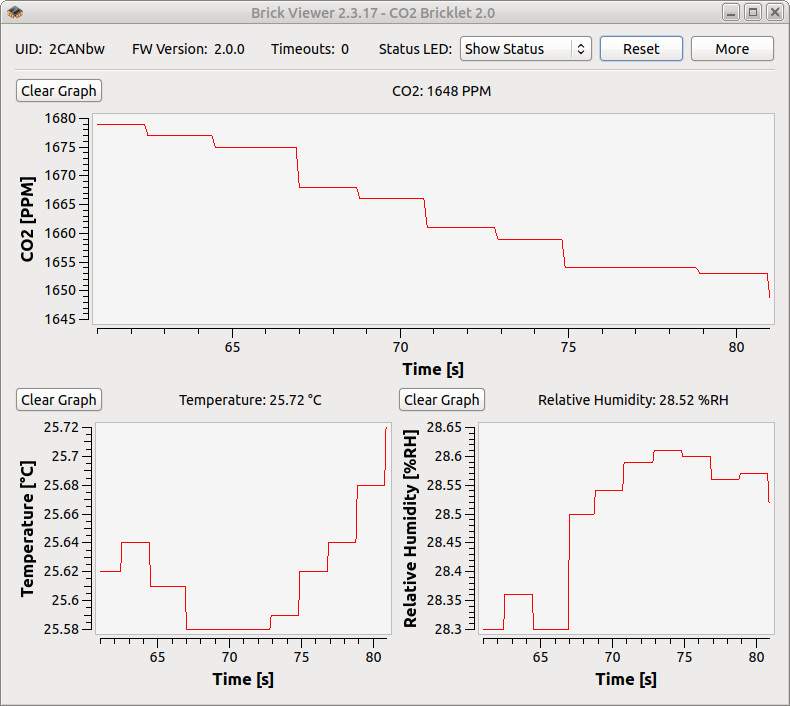
After this test you can go on with writing your own application. See the Programming Interface section for the API of the CO2 Bricklet 2.0 and examples in different programming languages.
Programming Interface¶
See Programming Interface for a detailed description.
| Language | API | Examples | Installation |
|---|---|---|---|
| C/C++ | API | Examples | Installation |
| C/C++ for Microcontrollers | API | Examples | Installation |
| C# | API | Examples | Installation |
| Delphi/Lazarus | API | Examples | Installation |
| Go | API | Examples | Installation |
| Java | API | Examples | Installation |
| JavaScript | API | Examples | Installation |
| LabVIEW | API | Installation | |
| Mathematica | API | Examples | Installation |
| MATLAB/Octave | API | Examples | Installation |
| MQTT | API | Examples | Installation |
| openHAB | API | Examples | Installation |
| Perl | API | Examples | Installation |
| PHP | API | Examples | Installation |
| Python | API | Examples | Installation |
| Ruby | API | Examples | Installation |
| Rust | API | Examples | Installation |
| Shell | API | Examples | Installation |
| Visual Basic .NET | API | Examples | Installation |
| TCP/IP | API | ||
| Modbus | API |


